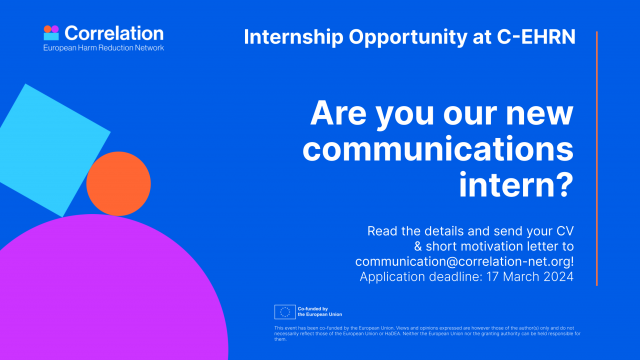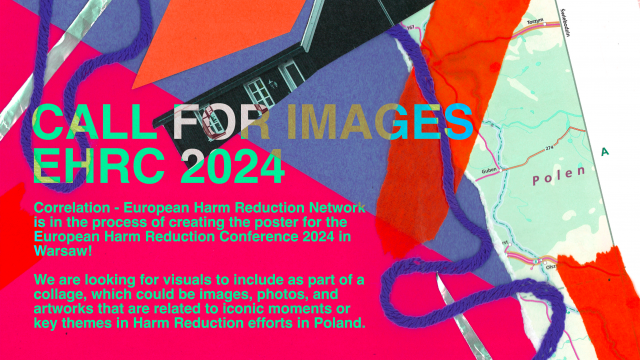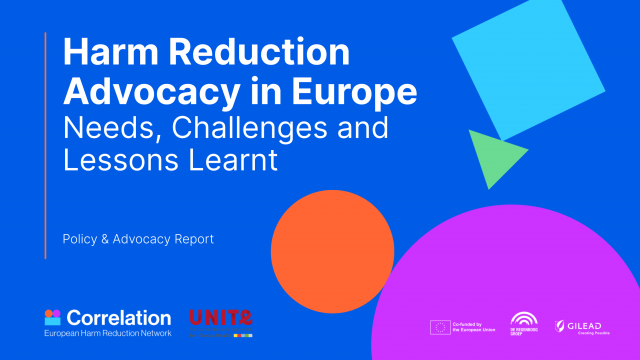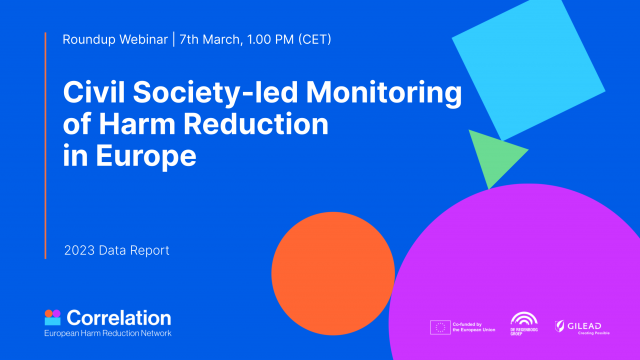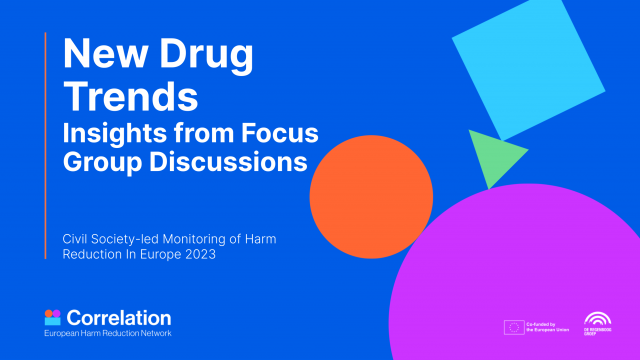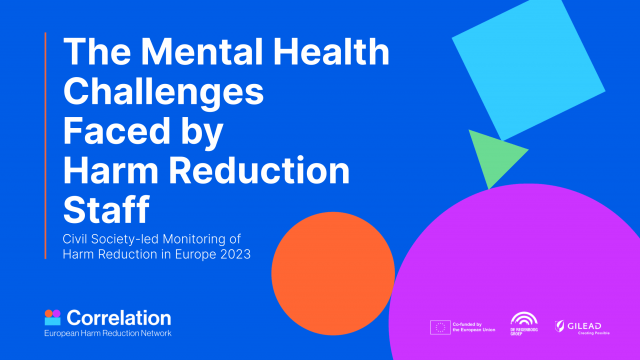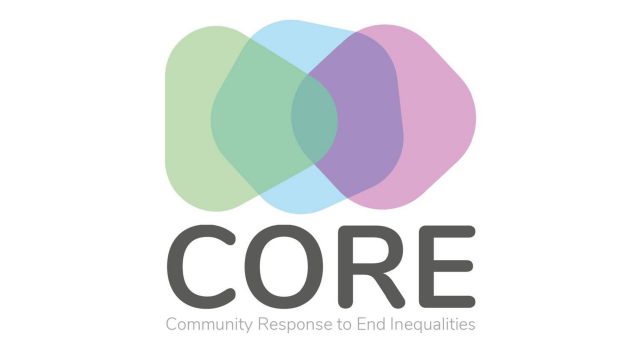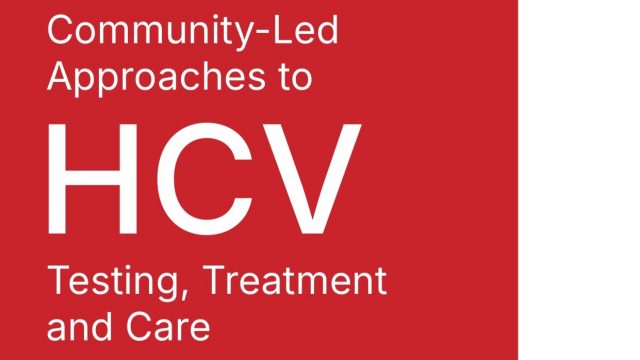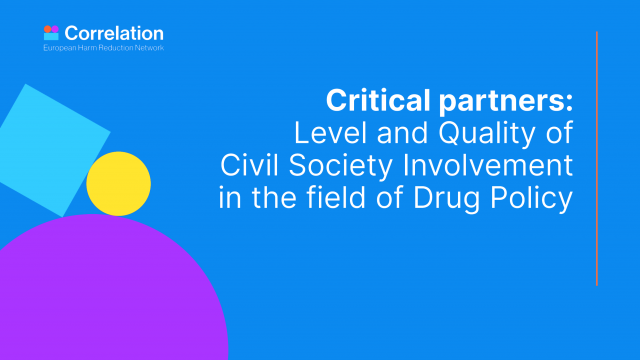We are looking for a Communications Intern for at least 2 days a week, who wants to go the extra mile to make social, health and harm reduction services available for marginalised and underserved communities.
Correlation – European Harm Reduction Network is a European civil society network and centre of expertise in the field of drug use, harm reduction and social inclusion, bringing together more than 280 community-based and community-led organizations in Europe. We are hosted by De Regenboog Groep – a low-threshold service provider based in Amsterdam.
At the C-EHRN Secretariat, we are a small and international team working from our office in Amsterdam.
As our Communication Intern, you will be responsible for supporting our communications officer in planning and creating engaging and informative content to promote our network activities, projects and results. You are ambitious, fluent in English and have excellent communication and time management skills.
This internship will involve engaging in a variety of tasks, including:
- Supporting the communication officer in implementing communication activities (for example the campaign for the 20th anniversary of the network);
- Content management for the C-EHRN website, related project websites and social media platforms;
- Writing and copy editing for a variety of channels and audiences (newsletter, articles, blog posts, interviews etc.) to contribute to the communication of network activities & the dissemination of research findings to relevant stakeholders;
- Producing branded materials for our communication channels;
- Collaborating with members and partners to increase the impact of our promotion activities;
This internship suits you if you:
- Are studying communication and media (or related studies), can translate complex ideas into an audience-friendly language and are interested in the area of drug policy, harm reduction and public health;
- Speak and write English fluently;
- Have good communication & interpersonal skills, enjoy working in an international environment and can work with people from different cultural backgrounds;
- Are open to working in a busy environment, like a challenge and have a flexible attitude;
- Can work in a team and autonomously and have a proactive and enthusiastic approach;
- Are strongly committed to human rights and equality and have a commitment and enthusiasm for our organisational mission, vision and activities.
- Have some photo and/or video editing skills.
We offer you:
- Professional experience in a communication position in the nonprofit sector;
- Opportunity to learn more about
- human rights, harm reduction, social & health policies, programmes & practices in Europe;
- NGO work, community & grassroots organising, advocacy and other activist work in Europe.
- A flexible and supportive working environment with the opportunity for hybrid work;
- A paid internship position;
- An internationally oriented internship with a lot of variety and excitement;
- A committed and fun team to be part of.
How to apply?
You read the details and find it a good fit? Send your CV & short motivation letter to communication@correlation-net.org by the 17th of March!
You can contact Hanna Szabó in case you have any questions: hszabo@correlation-net.org
We are an inclusive organisation, and we welcome all applications. We want our workforce to be truly representative of the communities we serve.
More about C-EHRN
Visit our website: www.correlation-net.org
Our vision
C-EHRN envisions a future where Europe embodies a compassionate and equitable society where people who use drugs and other communities disproportionately affected by stigma, discrimination, and harmful (drug) policies have universal access to sustainable high-quality health and social care. We conceive an inclusive and respectful environment where social justice principles guide policies, and individuals and communities affected by harmful drug policies find empowerment and dignity.
Our mission
C-EHRN’s mission is to create spaces for dialogue and action to reduce social and health inequalities and promote social justice in Europe. Bringing together the harm reduction movement in Europe, C-EHRN serves as an agent of change by promoting and supporting rights-based and evidence-informed policies, services and practices that improve the health and well-being of people who use drugs, and other communities disproportionately affected by stigma, discrimination, health inequalities and harmful (drug) policies.

